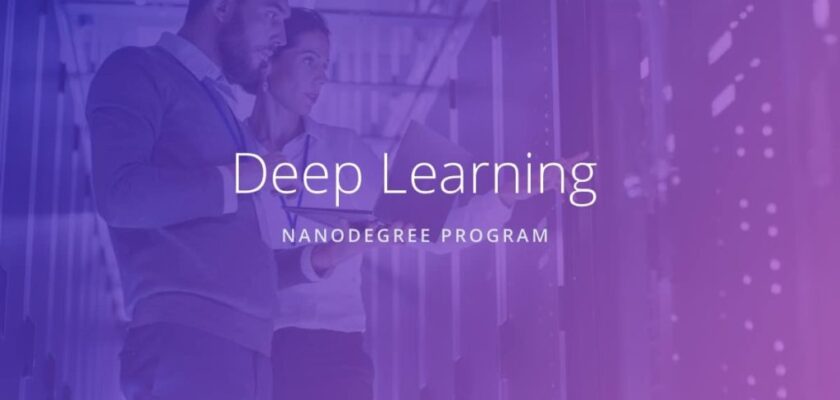Download and Learn Deep Learning Udacity Nanodegree Course 2023 for free with google drive download link.
Deep learning is driving advances in artificial intelligence that are changing our world. Enroll now to build and apply your own deep neural networks to challenges like image classification and generation, time-series prediction, and model deployment.
In collaboration with
What you will learn in Deep Learning Nanodegree

Deep Learning
4 months to complete
Become an expert in neural networks, and learn to implement them using the deep learning framework PyTorch. Build convolutional networks for image recognition, recurrent networks for sequence generation, generative adversarial networks for image generation, and learn how to deploy models accessible from a website.
Deep Learning Nanodegree Intro Video:
Prerequisite knowledge
This program has been created specifically for students who are interested in machine learning, AI, and/or deep learning, and who have a working knowledge of Python programming, including NumPy and pandas. Outside of that Python expectation and some familiarity with calculus and linear algebra, it’s a beginner-friendly program.
See detailed requirements Below ????
This program has been created specifically for students who are interested in machine learning, AI, and/or deep learning, and who have a basic working knowledge of Python programming. Outside of that Python expectation, it’s a very beginner-friendly program.
Introduction
Get your first taste of deep learning by applying style transfer to your own images, and gain experience using development tools such as Anaconda and Jupyter notebooks.
Neural Networks
Learn neural networks basics, and build your first network with Python and NumPy. Use the modern deep learning framework PyTorch to build multi-layer neural networks, and analyze real data.
Project – Predicting Bike-Sharing Patterns
Build and train neural networks from scratch to predict the number of bikeshare users on a given day.
Convolutional Neural Networks
Learn how to build convolutional networks and use them to classify images (faces, melanomas, etc.) based on patterns and objects that appear in them. Use these networks to learn data compression and image denoising.
Project – Landmark Classification & Tagging for Social Media
In this project, you will apply the skills you have acquired in the course to build a landmark classifier.
Photo-sharing services or photo-storage services may use landmark classification to automatically tag photos with relevant hashtags or location markers. This type of functionality could be especially important when photo location metadata is not available, which could happen when a photo is taken without metadata (e.g., phone was on airplane mode, camera was old and without GPS) or if a photo has had its
metadata scrubbed.
In the project, you will go through a machine learning design process end-to-end: performing data preprocessing and augmentation, designing your own CNN from scratch, and training and saving your best CNN model. You will also use transfer learning and compare your transfer-learned model with your from-scratch CNN.
Recurrent Neural Networks
Build your own recurrent networks and long short-term memory networks with PyTorch; perform sentiment analysis and use recurrent networks to generate new text from TV scripts.
Project – Generate TV scripts
Build a recurrent neural network on TensorFlow to process text. Use it to generate new episodes of your favorite TV show, based on old scripts.
Generative Adversarial Networks
Learn to understand and implement a Deep Convolutional GAN (generative adversarial network) to generate realistic images, with Ian Goodfellow, the inventor of GANs, and Jun-Yan Zhu, the creator of CycleGANs.
Project – Generate Faces
Build a pair of multi-layer neural networks and make them compete against each other in order to generate new, realistic faces. Try training them on a set of celebrity faces, and see what new faces the computer comes out with!
Deploying a Sentiment Analysis Model
Train and deploy your own PyTorch sentiment analysis model. Deployment gives you the ability to use a trained model to analyze new, user input. Build a model, deploy it, and create a gateway for accessing it from a website.
Project – Deploying a Sentiment Analysis Model
Train and deploy your own PyTorch sentiment analysis model. You’ll build a model and create a gateway for accessing it from a website.
Need to prepare? You’ll need intermediate experience with Python to start this program. Some basic knowledge of machine learning is beneficial, although not required, to start this program. Prepare now with AI Programming with Python.
The share of jobs requiring AI skills has grown 4.5x since 2013
Deep Learning Download Link:

